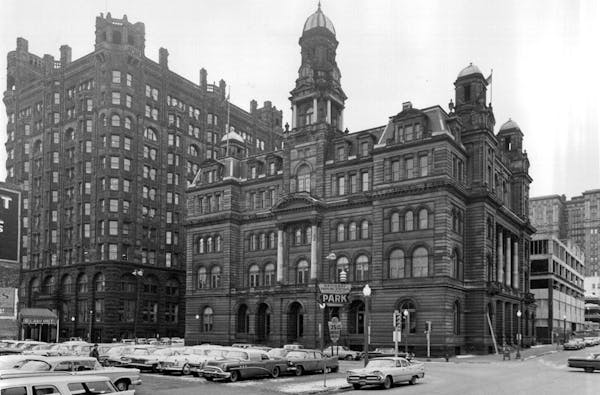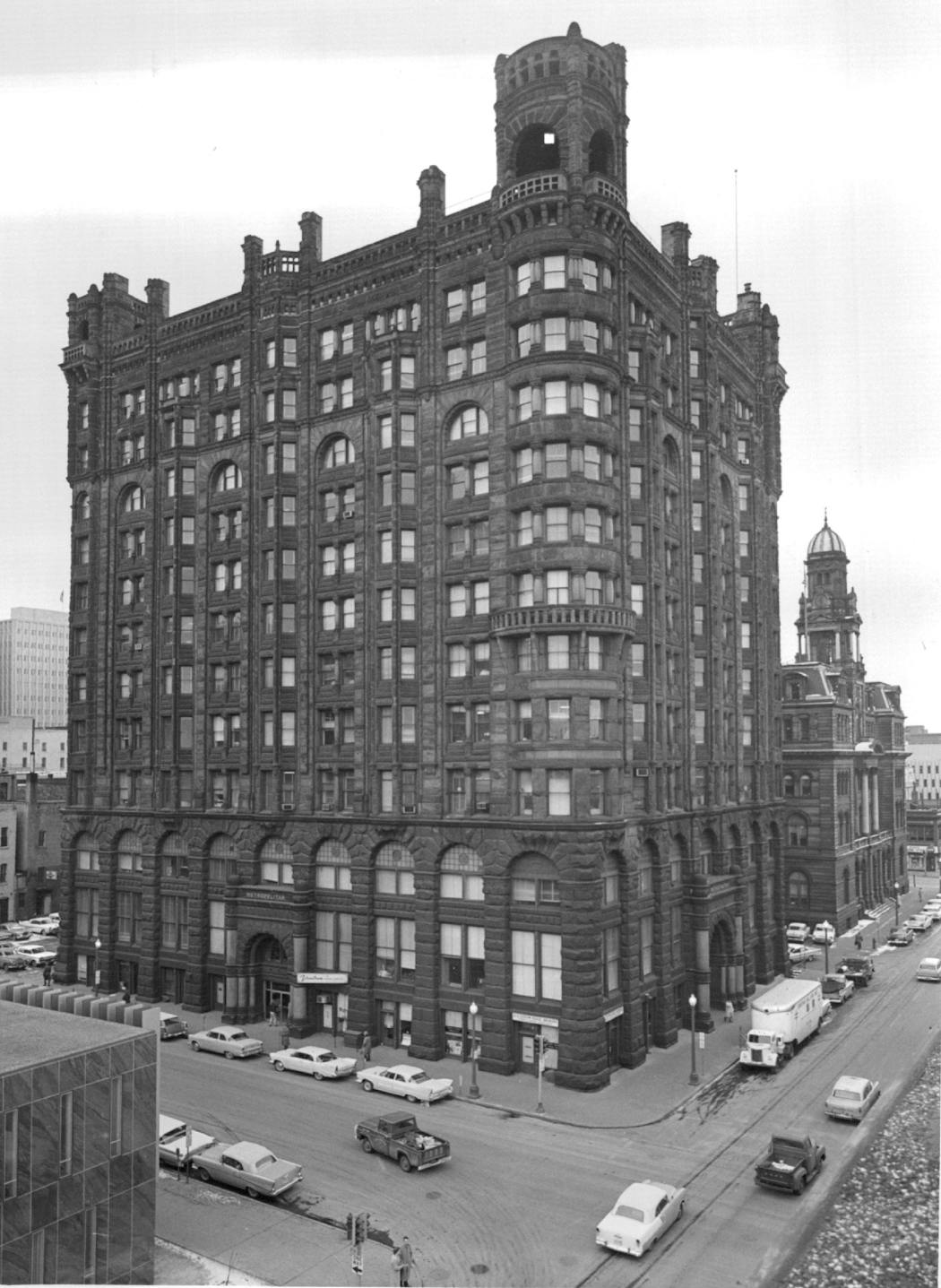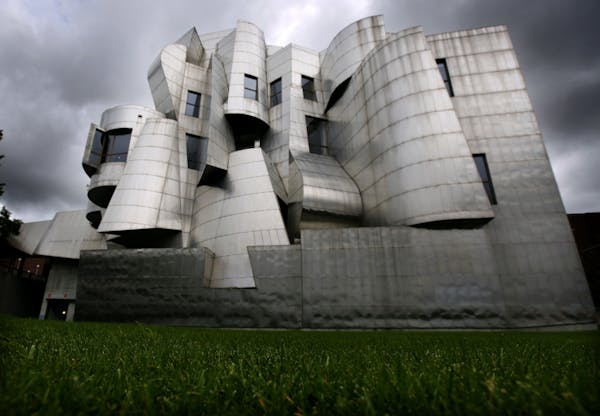The Northwestern Guaranty Loan Building (later the Metropolitan), designed by E. Townsend Mix, has acquired a good deal of fame since its demolition in 1961-62, and rightly so. Its iron-and-glass light court was one of the finest ever built in this country, and the needless destruction of the building still grates on many Twin Citians.
But before the Met appeared in 1890 at the corner of 3rd Street and 2nd Avenue S., another building with some striking similarities to Mix's masterpiece stood just a few blocks away at Washington and Hennepin avenues. It was called Temple Court, and it, too, was designed by Mix.
Temple Court (later called the Gateway Building) is all but forgotten today. It was, however, a fascinating structure that may well have served as a sort of high-rise laboratory for Mix, who had made his reputation in Milwaukee before relocating to the Twin Cities in the 1880s.
After designing William Washburn's enormous mansion (1884-1924) in what is now Fair Oaks Park near the Minneapolis Institute of Art, Mix began securing commissions for new downtown office buildings in both Minneapolis and St. Paul.
Temple Court, completed in 1886, was the first of these, and Mix got the opportunity to design it as a result of one of the most spectacular fires in Twin Cities history. The blaze broke out on Christmas Day in 1884, on the upper floors of the Academy of Music.
The 1,400-seat academy had been built only 12 years earlier. During its short life, it attracted many top performers and lecturers, among them the self-described "apostle of beauty," Oscar Wilde, who offered his thoughts on aesthetics to a no-doubt-baffled audience in 1882.
But the theater was never a financial success, and in 1883 its chief owner, Thomas Lowry, converted it to an office building. Then came the big Christmas Day fire.
According to newspaper accounts from the time, the day was extraordinarily cold — in the realm of 20 degrees below zero — and fighting the fire was a frozen nightmare, with water from the hoses turning instantly to ice. By the time firefighters were done, the building was coated in ice, as was the busy intersection of Hennepin and Washington. Streetcar traffic was halted for many hours until crews managed to dig out the tracks from under 8 inches of ice.
The building was a total loss, but the fire gave Lowry a chance to erect a much larger office building on the site. Mix was called in to design the new building, which opened within two years.
At eight stories, Temple Court was the city's second tallest office building when it opened. (The 10-story Lumber Exchange, also completed in 1886, took the height honors.)
The new building, which initially counted many lawyers among its tenants, presumably took its name from a similar building in the historic Inns of Court that serve London's legal community.
From the outside, Temple Court wasn't much to look at. The building, which had about 300 offices, did offer a nice little curve at the corner, but its facades were otherwise pedestrian. All the drama was on the inside, where Mix created his first great light court in the Twin Cities.
I've never found a photo of the court (I can only hope one exists somewhere), but I have seen a rough plan of it, as well as fairly detailed descriptions. Judging from that alone, it must have been spectacular. It was large, about 30 by 60 feet, and ringed by galleries that extended all the way from the second floor to the top of the building beneath a large skylight.
The layout of the light court was highly unusual in one respect. Mix placed the building's two elevators near the center of the court, rather than off to one side, which was customary practice. He then linked the elevators to the galleries on each floor by means of a bridge-like walkway.
The effect of this rather eccentric design was to divide the court visually into two distinct sections, with the elevators positioned in the middle like islands in space.
Mix had one other trick up his sleeve.
Some of the galleries featured translucent glass floors of the same type Mix would use four years later for the Metropolitan. These floors may have been the first of their kind in any office building in the United States.
Temple Court was not served well in the long run by its location in the heart of the Gateway District, which by the early 1900s was already regarded as skid row. Even so, it remained a reasonably well occupied Class-C office building through World War II.
In what may have been a case of bad-site karma, a four-alarm fire raced through the structure in 1947, causing heavy damage.
The building never recovered from the fire and was torn down in 1953. That year also saw demolition of the beautiful Gateway Park Pavilion just across Washington Avenue, as well as early stirrings of the Gateway Center Urban Renewal project that eight years later would claim many buildings, including the mighty Metropolitan.
Larry Millett is an architecture critic and author of 14 nonfiction books and eight mystery novels. He can be reached at larrymillett.com.

Helen Simonson is in Jane Austen mode with 'The Hazelbourne Ladies Motorcycle and Flying Club'
Frank Stella, artist renowned for blurring the lines between painting and sculpture, dies at 87

Frank Stella, towering artist and master of reinvention, dies at 87





